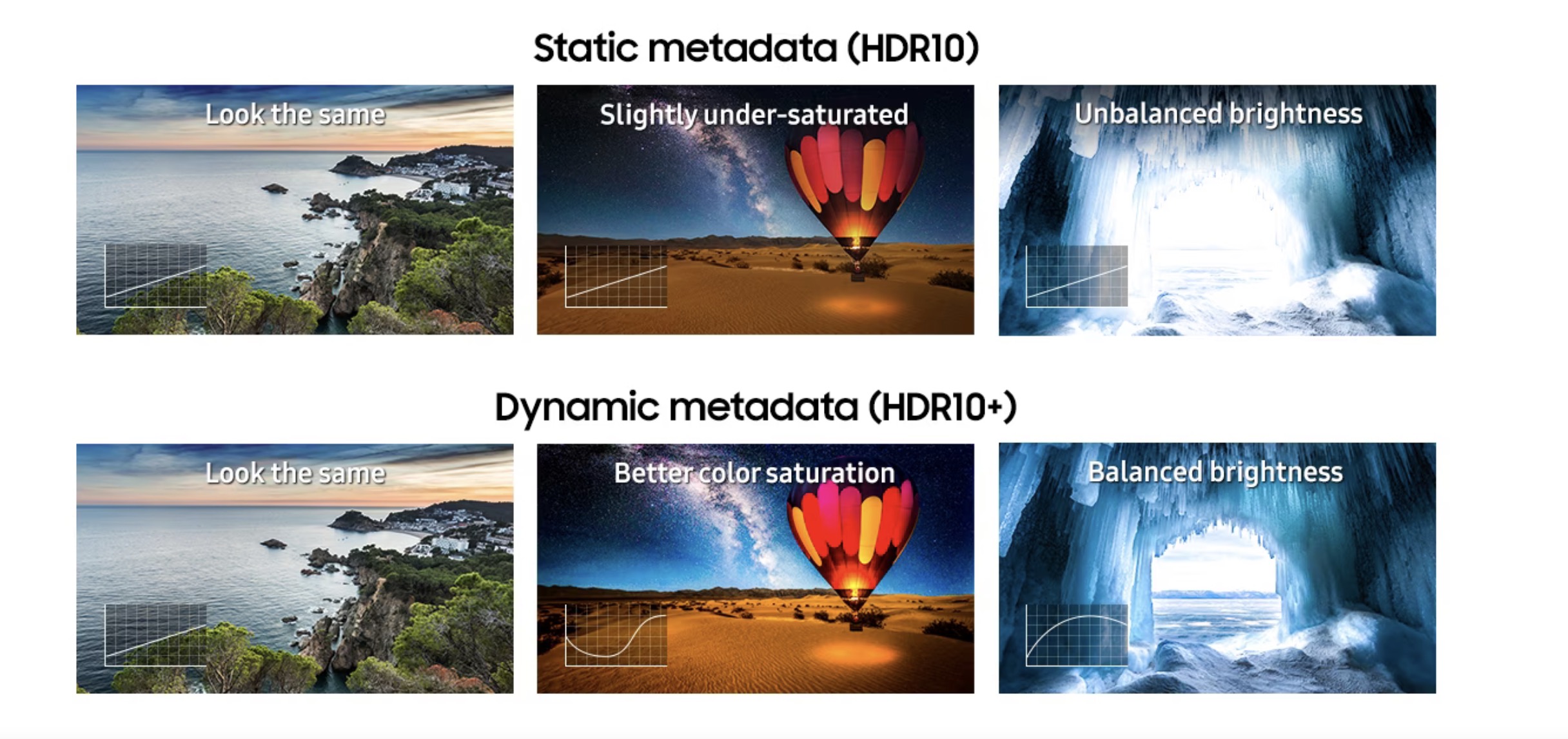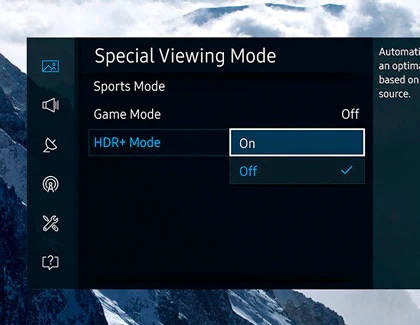
If you’re in the market for a new TV, you’ve probably come across terms like 4K, Ultra HD, or UHD. These terms relate to the resolution of the TV. While the resolution of your TV is important, there are other features built into new TVs that can have a serious impact on picture quality. HDR is one of those features, and if you ask anyone who plays a lot of console gaming or is a home theatre fan, it’s one of the most important features to have. Here’s what HDR is, its connection to 4K, and how it works.
What is HDR?
The term HDR stands for High Dynamic Range. In terms of TV features, it deals with colour representation and contrast. To sum it up into one sentence, HDR lets your TV showcase a wider range of colour and enhances the contrast between the brightest shades and the darkest shades. TVs with it look very vibrant and lifelike because they can replace those stiff, graduated colour layers you’d see on older TVs with natural, genuine colours that are perfectly blended, just like they would be in real life.
How HDR and 4K work together

As mentioned, 4K refers to the resolution of the TV. A 4K TV has approximately 4,000 pixels horizontally and four times the pixels a 1080p Full HD TV has. You can look at the 4K TV buying guide for more on how to shop for 4K TVs, but just keep in mind that you won’t be choosing an HDR TV or a 4K TV. It’s a feature on most 4K TVs and they work together to enhance your picture quality.
You can turn HDR off and on in your TV’s settings. With some of the latest gaming TVs, you will automatically be walked through the steps to adjust your screen for it when you plug your console into an HDMI port.
Benefits of High Dynamic Range
There are quite a few benefits to having High Dynamic Range on your TV. For movie fans, it elevates the viewing experience. It lets you see movies the way the filmmaker intended by heightening the realism and details.
For gamers, it’s an important feature because of the contrast between light and dark. With HDR turned on your TV will enhance shadowed areas and pitch you into a world with deeper black tones than a TV without it. HDR brings your movie or game to life, and it adds a sense of 3D to your flat screen.
How does it all work? There are two key components of HDR – colour and contrast.
Colour
A TV with HDR is able to display a minimum of 10-bit colour. 10-bit colour refers to how a display or image can represent over a billion different colours. The human eye can’t even perceive all of the colours possible, but you will definitely notice how the colour on the screen is accurate, smooth, and realistic.
Contrast
Contrast is the difference between the brightest and darkest areas on your video or game. Contrast is measured in “nits” and the brightness of your display will depend on what type of TV it is. For example, a standard 4K LED TV with HDR may have a brightness level of 4,000-6,000 nits. The dark areas of the TV will measure around 0.4 nits. This contrast ratio is referred to as “100,000 to 1,” meaning the lightest whites are 100,000 times brighter than the darkest blacks.
HDR10+ is available now

Like all TV technologies, HDR has evolved over time. The latest global standard is HDR10+. It still utilizes 10-bit colour for the most accurate colour palette and it enhances the contrast of the display, but it also allows for brighter highlights and displays bold, rich details.
To experience HDR10+ you’ll need a compatible device or the ability to run a compatible platform. It’s supported by most TVs, projectors, and computer monitors. You’ll also find some Blu-ray players and gaming consoles, including the Xbox One X, Xbox Series X, and PS5 are HDR10+ compatible.
Where can you watch HDR content?

HDR content is now offered on several streaming platforms. Netflix has a dedicated section, Disney+ offers it, and you’ll also find content on Apple TV+. When you’re surfing for something to watch be sure to check the details under the title. If the video is offered in HDR it will be noted.
As for gaming, not all PS5 and XBox games offer HDR, but there is a wide range of titles that do. You’ll want to look at the details in the game description to see if it’s one that supports HDR. It’s also important to remember that both your TV and the streaming platform or game need to support it. A TV with HDR won’t upscale a TV show without it and vice versa. The same rule applies to video games.
Are you ready to upgrade to a TV with HDR?
When you pair HDR’s colour and contrast with 4K resolution, the picture on your new TV will be nothing short of stunning. If you’re ready to upgrade your TV to one with this feature, you can find 4K TVs with HDR at Best Buy right now.








































HDR, which stands for High Dynamic Range, is a technology that enhances the visual quality of content displayed on TVs, including 4K TVs. It improves the contrast, color accuracy, and overall brightness of the image, resulting in a more vibrant and lifelike viewing experience.
Traditional TVs have a limited dynamic range, which refers to the difference between the darkest and brightest parts of an image. This limitation can lead to loss of detail in darker or brighter areas of the picture. HDR technology expands the dynamic range by increasing the brightness levels and providing a wider color gamut, allowing for more realistic and immersive visuals.
Here are some key aspects of HDR and how they affect your 4K TV experience:
1. Brightness: HDR content can achieve higher peak brightness levels compared to standard content. This means that bright scenes, such as sunsets or explosions, will appear more vivid and intense, with enhanced details in the highlights.
2. Contrast: HDR improves the contrast ratio by simultaneously displaying deep blacks and bright whites, resulting in a more realistic and visually striking image. It allows for a greater level of detail in both dark and bright areas, enhancing the overall depth and realism of the picture.
3. Color: HDR expands the color gamut, which means it can display a wider range of colors with more accuracy and precision. This leads to more vibrant and lifelike colors, making images look more natural and true to life.
4. Content Compatibility: To fully enjoy HDR, you need content that is specifically mastered for HDR. This can include HDR-enabled movies, TV shows, and streaming services that offer HDR-compatible content. It’s important to note that not all content is created with HDR, so availability may vary.
To fully experience HDR on a 4K TV, it’s essential to have a TV that supports HDR and to watch content that is HDR-compatible. This combination allows you to take full advantage of the enhanced picture quality and enjoy a more immersive viewing experience with improved brightness, contrast, and color accuracy.
Comments are closed.